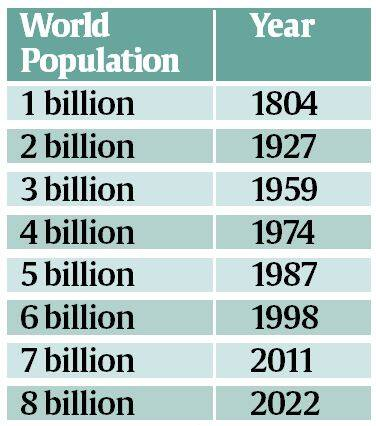Social Justice
World Population Prospects 2022
- 12 Jul 2022
- 5 min read
For Prelims: Demographic Dividend, Mortality Rate, Fertility Rate, SDGs
For Mains: World Population Prospects 2022
Why in News?
According to the 2022 edition of the United Nations’ World Population Prospects (WPP), India is projected to surpass China as the world’s most populous country in 2023.
What is the World Population Prospects?
- The Population Division of the UN has been publishing the WPP in a biennial cycle since 1951.
- Each revision of the WPP provides a historical time series of population indicators starting in 1950.
- It does so by taking into account newly released national data to revise estimates of past trends in fertility, mortality or international migration.
What are the Findings of the Report?
- Population Grows, but the Pace is Declining:
- The global population is expected to grow to around 8.5 billion in 2030, 9.7 billion in 2050 and 10.4 billion in 2100.
- In 2020, the global growth rate fell under 1% per year for the first time since 1950.
- Rates Vary across Countries and Regions:
- More than half of the projected increase in global population up to 2050 will be concentrated in just eight countries:
- The Democratic Republic of the Congo, Egypt, Ethiopia, India, Nigeria, Pakistan, the Philippines and the United Republic of Tanzania.
- The 46 Least Developed Countries (LDCs) are among the world’s fastest-growing.
- Many are projected to double in population between 2022 and 2050, putting additional pressure on resources and posing challenges to the achievement of the UN’s Sustainable Development Goals (SDGs).
- More than half of the projected increase in global population up to 2050 will be concentrated in just eight countries:
- The Population of Elderly is Increasing:
- The share of the global population aged 65 years or above is projected to rise from 10% in 2022 to 16% in 2050.
- Demographic Dividend:
- A sustained drop in fertility has led to an increased concentration of the population at working ages (between 25 and 64 years), creating an opportunity for accelerated economic growth per capita.
- This shift in the age distribution provides a time-bound opportunity for accelerated economic growth.
- International Migration:
- International migration is having an important impact on population trends for some countries.
- For high-income countries between 2000 and 2020, the contribution of international migration to population growth exceeded the balance of births over deaths.
- Over the next few decades, migration will be the sole driver of population growth in high-income countries.
What are the Findings Related to India?
- India’s growth rate stood at 2.3 % in 1972, which has dropped down to less than 1% now.
- In this period, the number of children each Indian woman has during her lifetime has come down from about 5.4 to less than 2.1 now.
- This means that Indian has attained the Replacement Fertility Rate, at which a population exactly replaces itself from one generation to the next.
- Fertility rates have been declining, so have mortality rates with increased access to healthcare and advances in medicine.
- Population of 0-14 years and 15-24 years will continue to decline while those of 25-64 and 65+ will continue to rise for the coming decades.
- This reduction of premature mortality for successive generations, reflected in increased levels of life expectancy at birth, has been a driver of population growth in India.
What are the Recommendations?
- Countries with ageing populations should take steps to adapt public programmes to the growing proportion of older persons, including by improving the sustainability of social security and pension systems and by establishing universal health care and long-term care systems.
- To maximize the potential benefits of a favourable age distribution, countries need to invest in the further development of their human capital by ensuring access to health care and quality education at all ages and by promoting opportunities for productive employment and decent work.
- For those already in the 25-64 age bracket, there is a need for skilling, which is the only way to ensure they are more productive and have better incomes.





